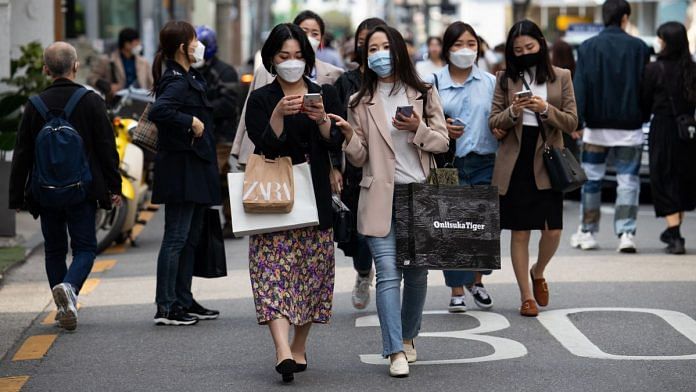With gold above $2,000 and central banks flooding the world with cash, the prospect of surging inflation is again starting to exert a grip on the minds of investors. Concern is premature: Deflation remains the bigger threat.
There’s little sign of a meaningful spurt in consumer prices, even after five months of unparalleled easing in fiscal and monetary policy to combat the pandemic. Not that you’d know it from some market commentary. Believers in a looming inflation spiral cite gold’s almost daily records and a slide in the dollar. Inflation expectations as measured by the U.S. 10-year breakeven rate have risen by more than a percentage point to 1.6% from a 12-year low in March. The Federal Reserve has contributed to the zeitgeist with its insistence that it isn’t even thinking about raising interest rates, amid signs the economic recovery will be unimpressive enough to warrant further stimulus.
It may all prove another false dawn. Bumps in consumer prices across Asia last month don’t disrupt the essential story of the past decade: Inflation just isn’t firing and remains significantly below the modest targets of around 2% typically set by central banks. The crushing of economic growth by Covid-19 has exacerbated this phenomenon, notwithstanding vigorous stimulus from budgets, steep cuts in borrowing costs and the re-emergence of quantitative easing. The collapse in global demand is more powerful than a runaway printing press.
If there is a runaway train approaching, it’s impossible to discern in the figures yet. Consumer prices in Tokyo, usually a leading indicator of Japan’s national numbers, rose 0.4% in July, the government said Aug. 4. That’s up from 0.2% the past two months and above the 0.1% advance forecast by economists. Separate numbers showed Japan’s monetary base rose almost 10% from a year earlier. Neither changes the overall picture that inflation will be hard pressed to reach even half the Bank of Japan’s 2% target within three years.
The same day in South Korea, the national statistics office said inflation picked up to 0.3% last month. That’s better than June’s zero and May’s negative readings, and consistent with signs the economy is brightening. But it’s well below the Bank of Korea’s 2% goal. Inflation believers might have found a fillip in Chinese data released Monday that showed consumer prices climbed 2.7% from a year earlier. Massive flooding that forced food prices up is the culprit, though, rather than virus-induced choke points. A peek at the core index, which excludes such volatile measures, shows China’s inflation is the lowest in a decade.
If Indonesia doesn’t give inflation hawks pause, it’s hard to imagine what might. The republic committed the ultimate heresy in the eyes of hard-money types when the central bank agreed to monetize government debt. In normal times, this would have investors running for the exits, given monetization is supposed to rob authorities of inflation-fighting zeal. But these aren’t normal times. Indonesian inflation was the lowest in two decades in July. Far from plunging, the country’s bonds were Asia’s top performers last month and third among 47 global markets.
The odds that U.S. inflation will exceed 2.5%, assumed to be the Fed’s tolerance threshold, aren’t trivial, say economists at Cornerstone Macro LLC in Washington. Yet deflation remains far more likely. Only once in the 46 years that Cornerstone tracked was deflation a greater specter than it is today, and that was for a brief interlude during the global financial crisis.
So what if inflation does genuinely spike, as opposed to merely picking itself back up off the floor? The cost of allowing prices to overshoot is nothing compared to the misery that will be inflicted if this wrenching slump is allowed to linger.
That means the onus is on those who argue that inflation is the danger to prove their case. In 2010, in the aftermath of the Great Recession, a group of economists, academics and money managers sent an open letter to then Fed Chairman Ben Bernanke warning that the central bank’s quantitative easing program risked inflation and currency debasement. It didn’t happen. Having cried wolf too loudly then, such voices should be treated with caution this time around.
Ultra-accommodative monetary policy and a bias toward slow draining of fiscal waters is warranted. If and when the inflation bogeyman finally arrives, it may seem like a good problem to have. – Bloomberg
Also read: Indians shouldn’t be expected to sell family jewels to help govt battle Covid’s economic impact






